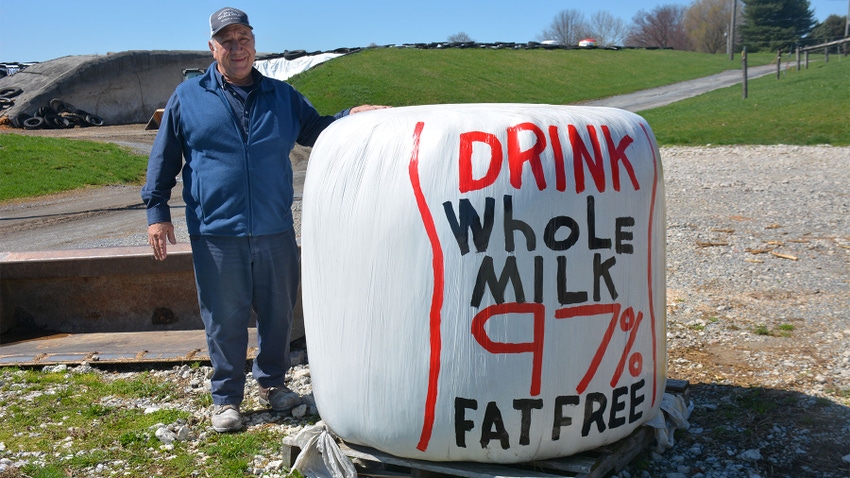
When I saw the news that the Whole Milk for Healthy Kids Act passed the House of Representatives by a 330-99 vote, all I could think of was calling Nelson Troutman.
Remember those “97 milk” hay bales that popped up around the countryside a few years ago, and are still out there? Troutman came up with the idea. You could have guessed what his reaction was to the news that the House gave its support to a movement that in many ways began on his farm.
“I was surprised,” he said. “It was almost like overwhelming to know it passed by that much, which is a good thing!”
The act would once again allow schools to offer whole milk and 2% milk in school lunches, and it would change current National School Lunch Program provisions that were implemented in 2012.
Those changes, which supporters claim were aimed at reducing childhood obesity, restricted school milk choices to unflavored low-fat, flavored fat-free and unflavored fat-free. The standards were modified in 2017 to allow schools to serve flavored 1% milk.
Did the changes work? Well, if you look at data from the Annie E. Casey Foundation, probably not. Childhood obesity is still a big problem. According to the foundation’s Kids Counts data center, 33% of children ages 10-17 were overweight or obese in 2020-21, a figure that rose 2% in five years and corresponds with an increasing share of children — 55% in 2020-21 — who do not exercise regularly.
What it did do, though, was lead to less kids drinking milk in school and a lot of thrown-out milk cartons as a result.
It also sparked a grassroots movement, led by Troutman and other dairy farmers and advocates, to get whole milk back in schools. He did it with a little bit of paint and some hay bales lying around the farm.
Soon, other farmers were calling him for bales of their own, and the “97 milk” movement, based on the fact that whole milk is made up of 3.25% milk fat, was born.
I will admit, the hay bales really didn’t spark much interest in me at first, even though they were everywhere. I thought it was just a clever gimmick put on by some well-meaning people that really had little chance of generating much change. But I was wrong. It did bring about change, or at least helped nudge it along.
And really thinking about it, it’s common sense. In my house, whole milk rules. I probably buy 3 to 4 gallons of whole milk a week because my 5-year-old drinks a lot of it — with chocolate syrup, of course — and everyone else eats a lot of cereal.
There are so many things that are worse for a child’s health. Soda, candy bars, coffee, cigarettes, the list goes on and on. Is whole milk really that bad considering the alternatives?
Listen, you can’t argue against the goal of trying to reduce childhood obesity. It’s a noble goal, and maybe some science does support the idea that whole milk, in certain amounts, may not be that healthy for children. But things change and evolve, and politicians can no longer ignore people who want change and choice.
“I didn’t know how this was going to work, and we worked so hard on it. It’s not for us, it’s for the kids, it’s for the farmers, it’s for everybody,” Troutman told me by phone.
And it’s a victory for common sense. Hopefully the Senate has enough of its own common sense to also do the right thing and allow whole milk back in schools. It’s time.
About the Author(s)
You May Also Like






